With so much troubling news about our environment lately, any good news is welcome, and I found some worth sharing with you. The Monarch butterfly is making a comeback!
Last month, the Xerces Society reported a surprising outcome from its 25th annual Western Monarch Thanksgiving Count. Volunteers observed 247,237 monarch butterflies observed across western overwintering sites: a more than 100-fold increase from last year.
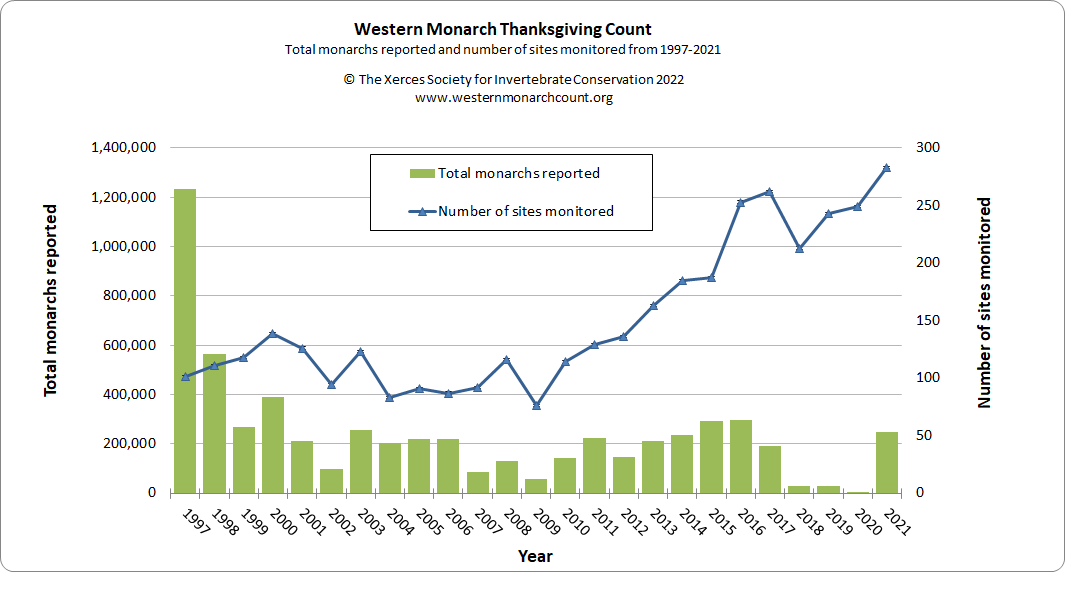
There is hopeful news about the Monarch butterfly population from the annual Thanksgiving census. Graph: Xerxes Society
Xerces Society biologists Isis Howard and Emma Pelton write, “This year’s total both amazed us with the monarchs’ ability to bounce up from a record low and underscores the importance of ongoing conservation efforts to recover the western monarch butterfly population.”
The Western monarch butterfly is one of the most recognizable insects in the world. It is called “the ambassador of nature.” Ten million monarch butterflies used to spend the winter in California during the 1980s.
Monarch butterflies still need our help
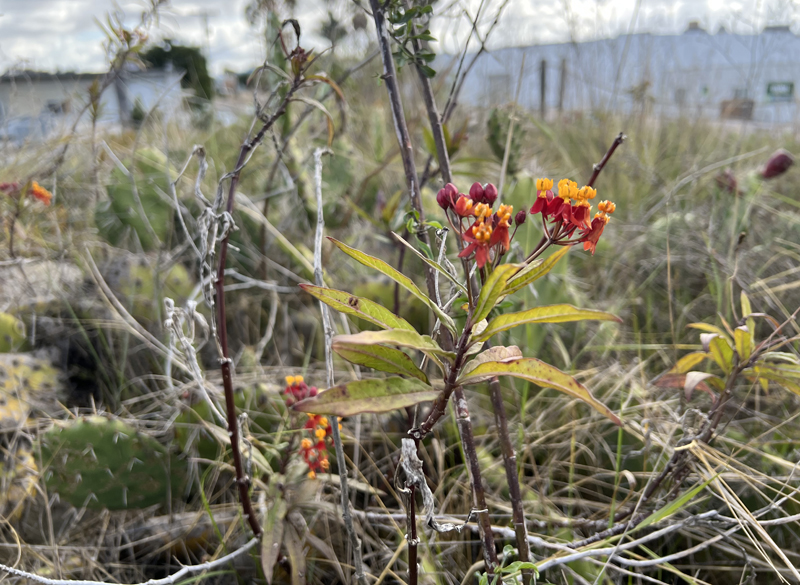
It is critically important to keep planting milkweed. Good Earth Plant Company keeps a supply on our green roof. Photo: Jim Mumford
But western monarch butterflies are quickly disappearing and remain in danger of extinction. The last time we wrote about this, the 2018 Western Monarch Thanksgiving Count organized by the Xerces Society for Invertebrate Conservation found an all-time low of 28,429 monarch butterflies in California. That is a 99 percent decline.
Although nearly 250,000 butterflies is a hopeful increase from 28,000 plus, it’s still not millions. But it’s still amazing news and it sends this message: our efforts to help save the Monarch butterfly are working.
Long ago, we planted milkweed on the Good Earth Plant Company green roof in Kearny Mesa. We are a tiny oasis of green in an asphalt desert. But the monarch butterflies find our milkweed even there, and we see the caterpillars and the flashes of orange wings in the spring. Our milkweed buffet has gotten a lot of activity and the remaining plants are pretty thin, so we plan on refreshing our supply.
If you haven’t joined the effort, you (and your garden) still have time to get on board. There aren’t many opportunities for one individual to really make a difference, but you can help save a species from extinction.
Plant some milkweed, save the monarchs
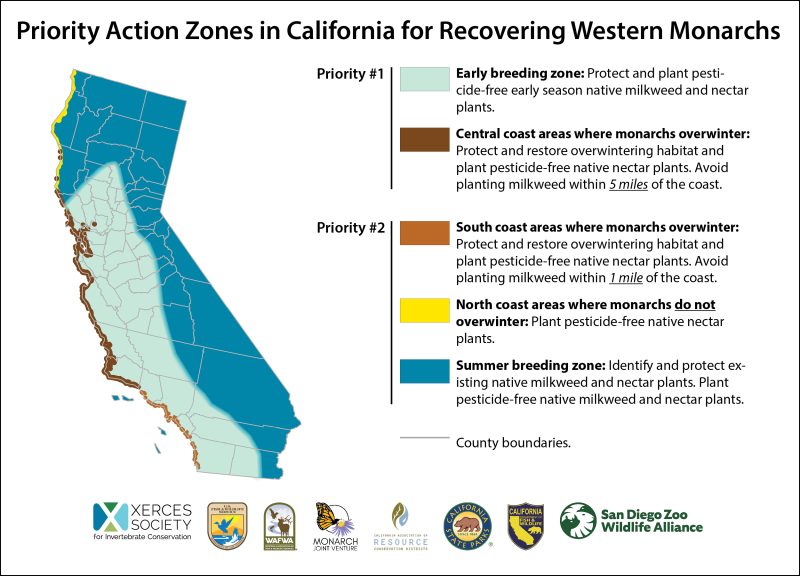
San Diego County is in the early breeding grounds zone for monarch butterflies. Now is the time to prepare for their visits. Graphic: Xerxes Society
First, why is this happening? Multiple reasons include the loss of tree groves to development and pesticide contamination. But the biggest reason is the removal of milkweed. Monarchs are dependent on milkweed. No milkweed, no monarchs.
Monarch butterfly caterpillars only eat milkweed plants, and monarch butterflies need milkweed to lay their eggs. Because so much milkweed has been lost over the years from California’s lands, we lose the monarch butterflies along with it.
So your task is simple as this: plant milkweed in your garden and wherever you can to support monarch populations. Planting milkweed helps other important pollinators too, not just monarchs.
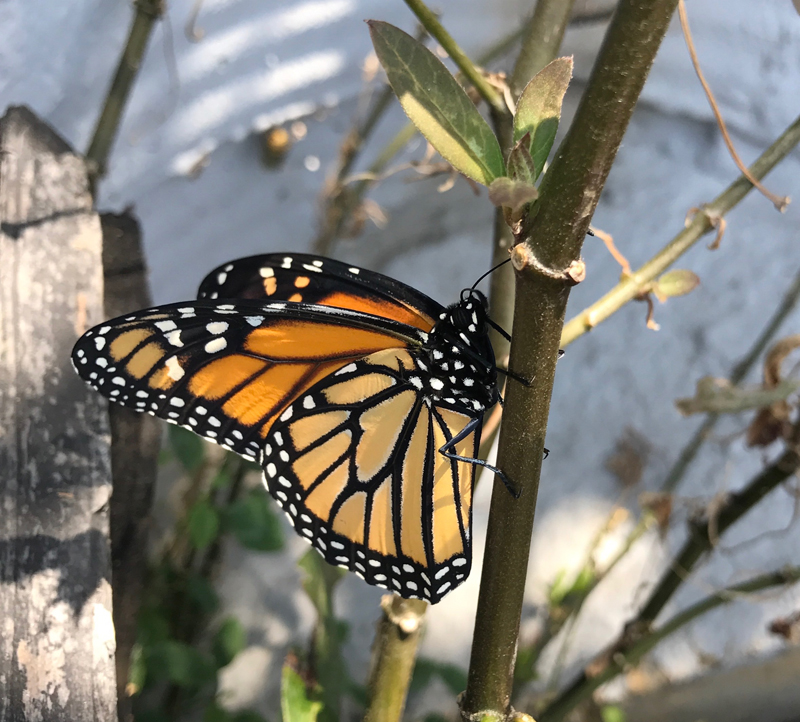
The western California monarch is in danger of extinction. Good Earth Plant Company provides critical milkweed habitat and we’re thrilled to see it working. Photo: Erin Lindley
But you must plant NATIVE California milkweed. California has 15 native varieties of milkweed, and you need to plant ONLY one of these natives. Two are common, showy milkweed (Asclepias speciosa) and narrow-leaved milkweed (A. fascicularis). You should be able to find them in many garden centers or plant suppliers.
DO NOT plant tropical milkweed (A. curassavica, which is not native to California). Be sure to ask at your favorite local nursery. Most knowledgeable California gardeners know the difference.
A few of the San Diego County nurseries that sell milkweed plants:
- City Farmers Nursery (City Heights)
- Walter Anderson Nursery (Poway and Point Loma)
- Mission Hills Nursery (Mission Hills)
- Neel’s Nursery (Encinitas)
- Anderson’s La Costa Nursery (Encinitas)
- El Plantio Nursery (Escondido)
- Green Thumb Nursery (San Marcos)
- Myrtle Creek Nursery (Fallbrook)
If you are in another area of Southern California, find more local resources here. It’s also a smart idea to call ahead. Native milkweed can sometimes be in short supply as more people join the effort.

Pollinators including adult monarch butterflies count on food sources. The freesias growing on the Good Earth Plant Company green roof are ready! Photo: JIm Mumford
While you are at it, plant native wildflowers, and other favorites of pollinators. Find a section of your landscaping you can dedicate to a pollinator garden. Other good plant choices include many different herbs including lavender and sage which both grow well in Southern California, geraniums and sunflowers, and others. Check out this chart. If you need help, ask anyone at your favorite garden center.
We are lucky enough to have a plant supplier in San Diego County that focuses on producing plants specifically for butterflies. Luca & Michaela Nursery also operates the nonprofit Butterfly Farms in Encinitas. Its “Vivarium” full of butterflies will open in April to the public for visits. http://www.butterflyfarms.org/ You can also sponsor a single butterfly with a donation, or a lot more.
Why the monarch butterfly matters
Whether you love monarch butterflies or not, you need to be concerned about them.
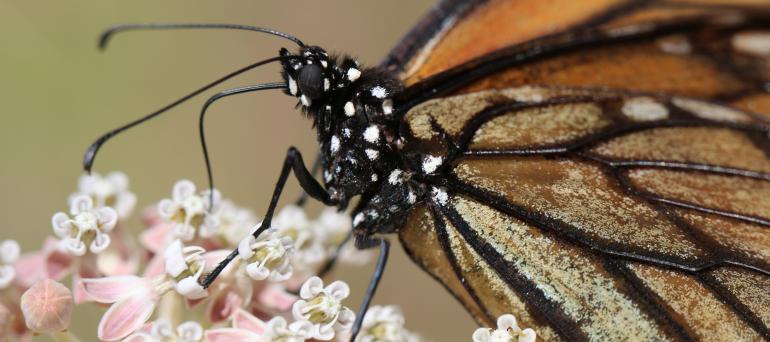
When monarch butterflies suffer, many more species will follow. Photo: Xerxes Society / Stephanie McKnight
Monarch butterflies are considered an “umbrella species.” Protecting monarch butterflies also protects many other species that share their habitat. Caterpillars grow to be monarchs, but they are also a source of food for many other birds and animals. Less milkweed equals fewer caterpillars means a reduced amount of food for insect-eating birds and the rodents that are food for bigger carnivores. You can see how this works pretty quickly.
California scientists believe the monarch population can continue to recover but ONLY if we all step up to help. While you might not be able to plant milkweed on your green roof and the canyon behind your home like me, can’t you add a little bit somewhere? Maybe a troublesome area against a fence or in a side yard that needs some attention? The good news is milkweed is fairly easy to grow when you give it a chance. It is a WEED, after all.
Add pollinator-friendly flowers nearby, since adult monarchs will drink the nectar of many flowers in addition to milkweed. Use native flowering species with different bloom times to provide monarchs with the food they need to reproduce in the spring and summer and to migrate in the fall. Think of how much you’ll enjoy watching the monarchs and other pollinators this year, and knowing you did your part.
Wouldn’t it be amazing to see this year’s Thanksgiving count go up at least 100 percent? There’s no reason it can’t happen with our help!
More monarch butterfly information resources:
For more information about planting milkweed, download the MJV Milkweed Fact Sheet
Visit the Xerces Society for Invertebrate Conservation website for this good information sheet about Southern California pollinator friendly plants.
More pollinator resources in California from the Xerces Society.
